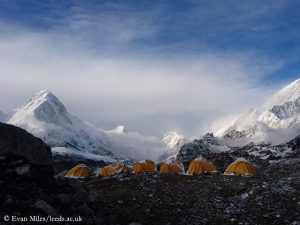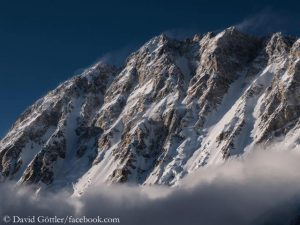“Warm” ice in Everest glacier
The Khumbu Glacier at the foot of Mount Everest is apparently even more endangered by climate change than previously assumed. British glaciologists, who measured the ice temperature of the glacier in 2017 and 2018, point to this. At three drill sites up to an altitude of about 5,200 meters near Everest base camp, they used a specified adapted car wash unit to conduct hot water under high pressure into the ice. The scientists hung strings with temperature sensors in the resulting holes, the deepest of which reached about 130 meters deep into the ice. “The temperature range we measured was warmer than we expected – and hoped – to find,” says Duncan Quincey of Leeds University, leader of the “EverDrill” project.
Warmer than the outside air
According to the glaciologists’ study, the minimum ice temperature was minus 3.3 degrees Celsius, “with even the coldest ice being a full two degrees warmer than the mean annual air temperature”. A similar study carried out near Everest Base Camp in 1974 found ice that was two to three degrees colder. “’Warm’ ice is particularly vulnerable to climate change because even small increases in temperature can trigger melting,” explains Quincey. “Internal temperature has a significant impact on the complex dynamics of a glacier, including how it flows, how water drains through it and the volume of meltwater runoff.” Millions of people in the Himalayas and Hindu Kush are affected by these processes because they depend on glacier water, says the researcher.
“Water tower for Asia”
Five years ago, scientists at the University of Milan pointed out that the ice masses around Everest had shrunk by 13 percent over the past 50 years. “The Himalayan glaciers and ice caps are considered a water tower for Asia since they store and supply water downstream during the dry season,” said the Nepalese geoscientist Sudeep Thakuri at that time. “Downstream populations are dependent on the melt water for agriculture, drinking, and power production.”









